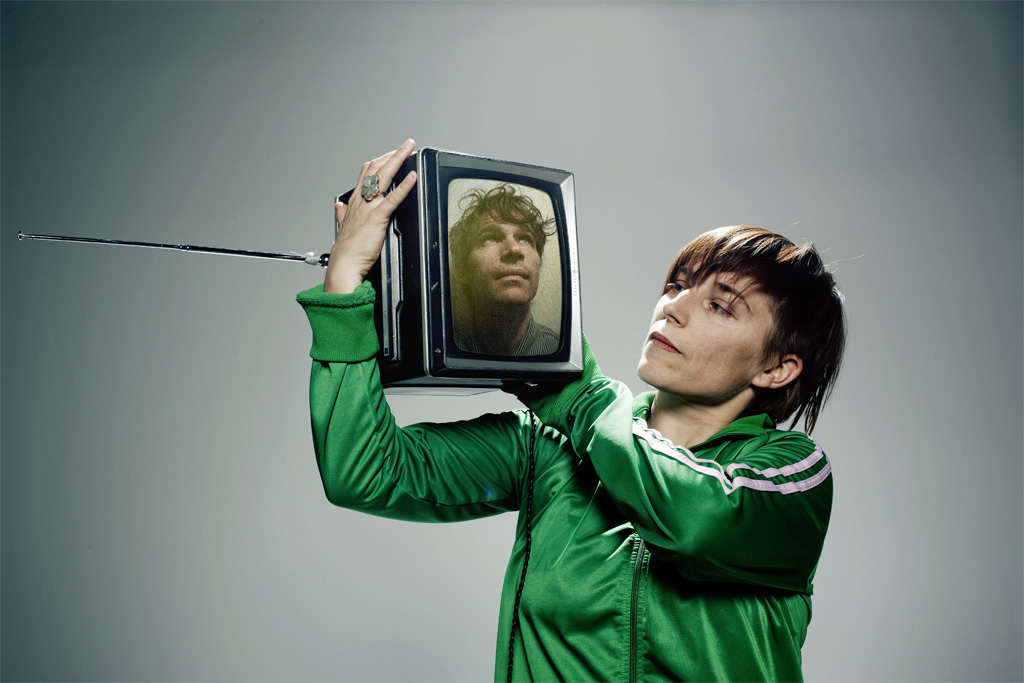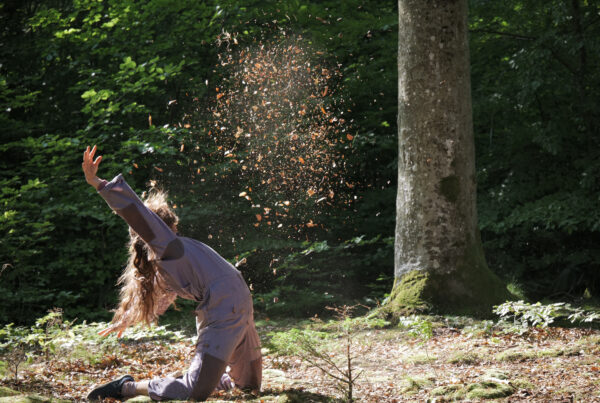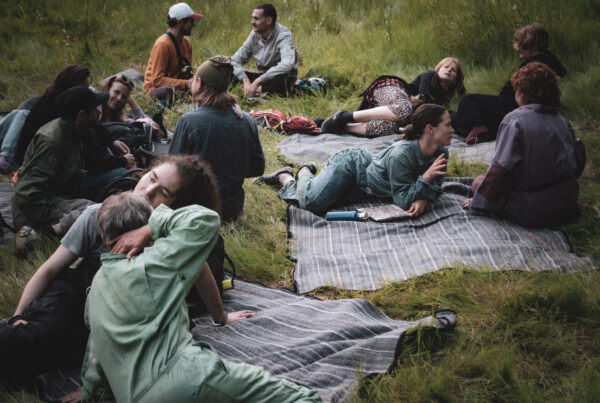Interview Anna Freeman for Odyssey Works
March 7th 2016
Odyssey Works: How did you come up with the concept of closer, and how did the idea develop from there? What are you trying to do with this work?
Olive Bieringa: We have been working with the idea of choreographing empathy for the past five years.
Our recent work Super Nature was one example. It was a radical ecological melodrama. It took the form of a one-on-one installation combined with an evening-length work for the theatre. We were interested in pursuing a visceral responsiveness in our audiences in order to engage them in a sense of their own animal instinct.
“We use ‘audiencing’ as a verb.”
The idea for closer developed from this concept of a two-part experience, an intimate introduction leading to a larger group work, using the contagion of movement to create transformation in a very personal and direct way.
The piece lays bare the power of physicality and presence and plays with how the meeting between performer and audience member generates the possibility for something new. closer (solo) is an exchange between audience member and performer, an opportunity for self-awareness and self-healing as we practice being present with another person. It is a container for the transmission of embodiment. It also offers our audience a way to reflect on how they watch dance. How do we create meaning and value around our experiences, without judgement? We use “audiencing” as a verb. This is something we can all practice together, experienced dance viewers and novices alike, sharing our resources. closer (group) takes place in the theatre and utilizes the experience audience members have gained in closer (solo). In closer (group), the audience can be anywhere in the space that the performance takes place in, actively pursuing their curiosity. This potentially brings them closer to the work from different perspectives, literally and figuratively.
OW: Why dance in public spaces? How does this change things?
OB: We have been working in public spaces since BodyCartography began eighteen years ago. We are experienced improvisors. It keeps us real. You can never control public space in same way as you can control theatre space. Different kinds of environments (e.g. social, architectural, wilderness) inspire different kinds of dances. Our motivations have continued to evolve. Bringing dynamic physical practices, alternative movement behaviors, and engaged embodiment into public spaces, spaces which are often devoid of this kind of consciousness, feels purposeful and meaningful. We meet and dance with people we would not connect with otherwise. In doing so, we create transformation in how people inhabit, use, perceive, and remember public space.

Otto Ramstad performing closer (solo) at Minneapolis City Hall, 2015. Credit Sean Smuda.
OW: closer(group) ends in a dance party. What influence has social dance had on your work?
OB: If we are looking at ideas of physical engagement, it makes sense to invite people further and further inside the work. My passion for dancing was fed deeply on the nightclub dance floor as a teenager. It’s an accessible and celebratory evolution.
Contact improvisation is a social dance form that has had a profound effect on our work. It informs the dancing in closer (solo) in how we use the environment as dance partner.
OW: What is the collaboration between artist and audience as you see it? Where is the artwork itself located?
OB: The artwork is located in the relationship between the performers and the audience, in the bodies of the performers and the audience, in the memory of the performers and the audience, and in our personal interpretations of those experiences.

Kendra Dennard performing closer (solo), 2015. Credit Sean Smuda.
OW: You use the term “presence” to describe your work. What does this mean to you? How does it work and what is the point?
OB: Presence is about being in relationship—with oneself, one’s cells, one’s environment, and other beings. How can we attend to our own internal needs and those of the audience and external environment at the same time? This capacity to fluidly be in relationship amidst many shifting conditions requires porousness and deep self-knowing.
“Everything takes on significance—like somebody turned up the volume on your walk to the corner shop and everything is loud and glowing.”
OW: Do the experiences you create in closer bleed into the surrounding reality?
OB: In closer (solo), I don’t think either the performer or audience member feel that they are necessarily blending into the surrounding reality, as they are often in a very heightened state of awareness, where everything takes on significance—like somebody turned up the volume on your walk to the corner shop and everything is loud and glowing. Maybe the larger public is completely unaware that an artwork is unfolding around them, noticing only odd moments. For me, closer (solo)can be deeply therapeutic and endlessly challenging. How do I want to spend fifteen minutes of nonverbal time with a complete stranger? How do we find our way through the potential awkwardness to make something shift in the way we are together? Sometimes it’s a perfect match. Your audience’s attention and ability to focus is tuned for the kind of dance you are up for creating. Sometimes we just fail. How do we adjust our expectations, our speed, our movement conversation, and have compassion for ourselves and each other? How subtle can a dance or a transformation be? How can being together be enough?



